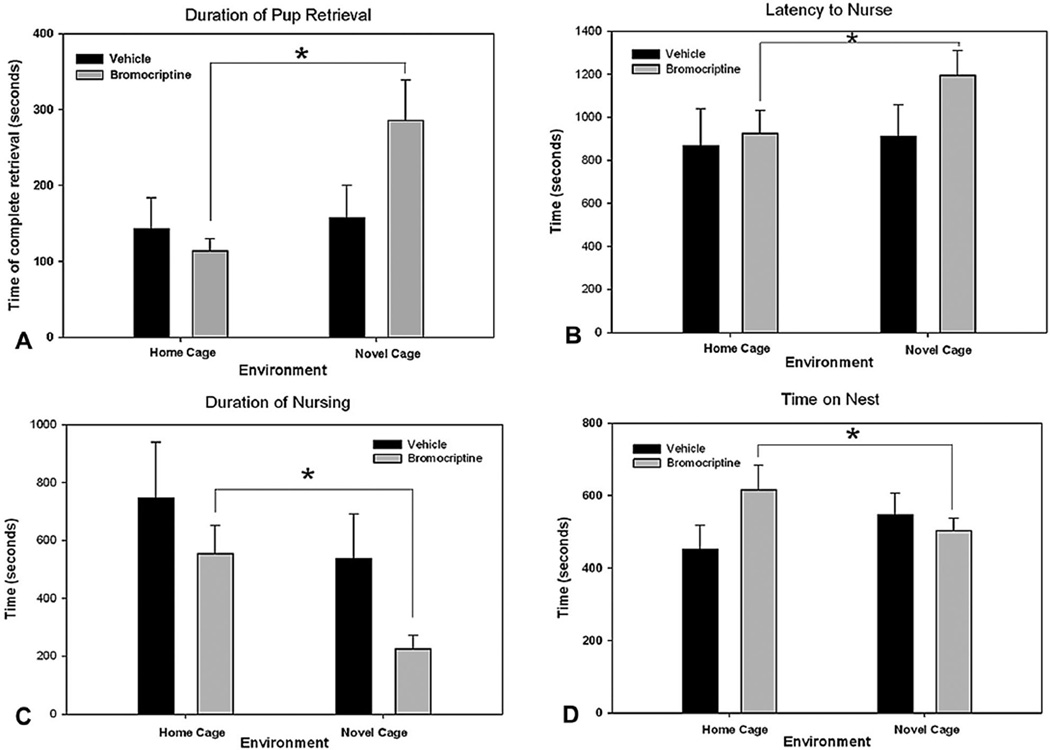FIGURE 1.
The effect of bromocriptine treatment on total duration of pup retrieval (A), latency to nurse (B), duration of nursing (C), and time on nest (D). Values shown are means + SEM. (A) Combined groups of dams treated with bromocriptine (10 rats at a dose of .05 mg/kg, 8 rats at a dose of .2 mg/kg) took significantly longer to retrieve all eight of their pups in a novel cage compared to a home cage (t = 3.56, *p = .002). Rats treated with the vehicle did not differ in home and novel cage pup retrieval latencies. (B) Dams treated with bromocriptine took significantly longer to initiate nursing in a novel cage compared to a home cage (t = 2.11, *p < .001). Rats treated with the vehicle did not differ in latency of nursing between the home and novel cages. (C) Dams treated with bromocriptine spent a significantly shorter amount of time nursing their pups in a novel cage compared to a home cage (t = 2.86, *p = .01). Rats treated with the vehicle and tested in the home and novel cages did not differ in nursing duration. (D) Dams treated with bromocriptine spent a significantly shorter time on the nest in a novel cage compared to a home cage (t = 2.07, *p = .027). Rats treated with the vehicle did not differ in time spent on the nest in the home and novel cages.

